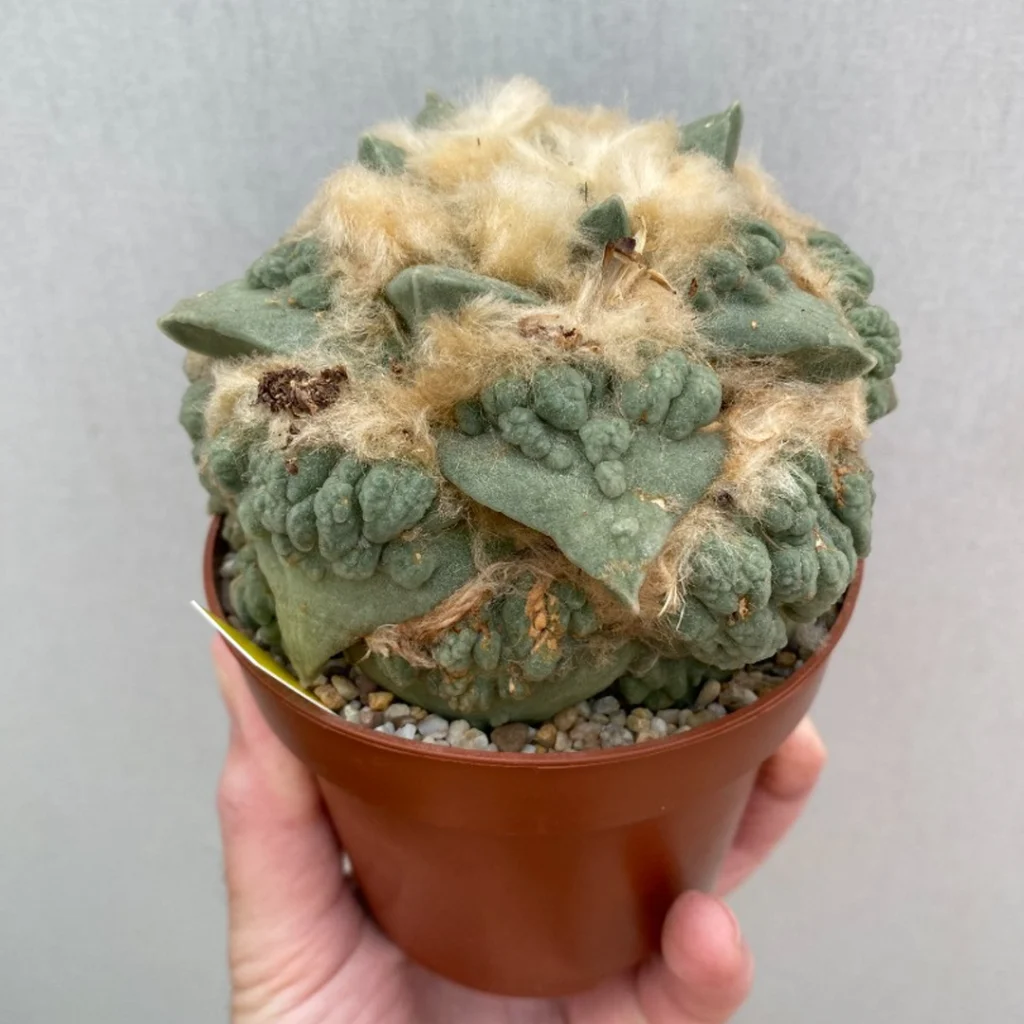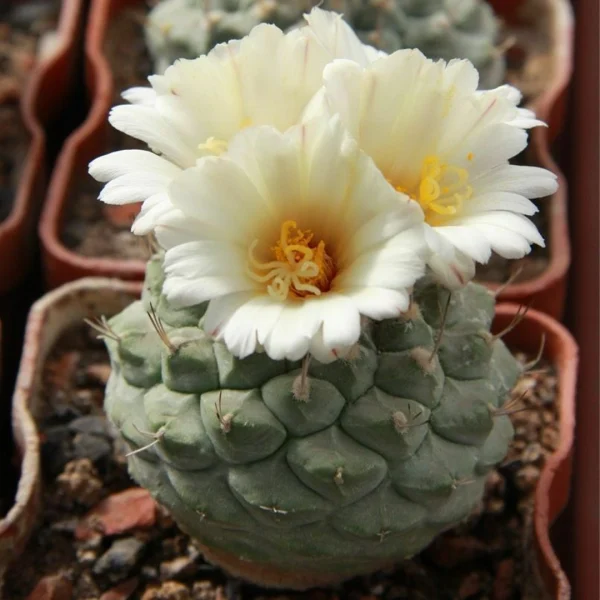Strombocactus disciformis is a unique and rare cactus species native to northeastern Mexico, primarily found in the Chihuahua region. Known for its distinctive, flattened, disk-shaped body, this cactus has pronounced, spiral ribs that give it an elegant, geometric appearance. The plant’s surface is usually covered with short, fine spines that offer a soft, velvety texture.
One of the most striking features of Strombocactus disciformis is its flowers. During the blooming season, it produces small, funnel-shaped flowers that range in color from pale pink to purple. These flowers appear at the top of the cactus and add a splash of color to its otherwise green body. Due to its slow growth, this species is relatively small and compact, making it a prized plant for collectors and cactus enthusiasts.
Care Tips:
- Light: Provide bright, indirect sunlight. It can tolerate some direct sunlight, but protect it from harsh midday sun to avoid sunburn.
- Watering: Water the cactus when the soil is completely dry. Be cautious of overwatering, as this can lead to root rot. Water less frequently in winter.
- Soil: Use a well-draining cactus mix, ideally with added sand or pumice to ensure proper drainage.
- Temperature: Strombocactus disciformis thrives in warm temperatures between 20°C to 30°C (68°F to 86°F). Keep it protected from frost, and avoid temperatures below 10°C (50°F).
- Fertilizer: Apply a diluted, balanced cactus fertilizer during the growing season (spring and summer). Over-fertilization should be avoided.
- Repotting: This cactus grows slowly and doesn’t need frequent repotting. Repot every 3-4 years or when the plant becomes root-bound.
- Propagation: Propagate through seeds, though be aware that it may take time to grow into a mature plant. Propagation through offsets, if available, can also be attempted.

























